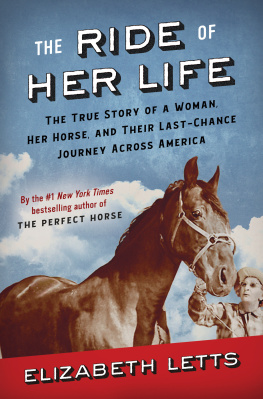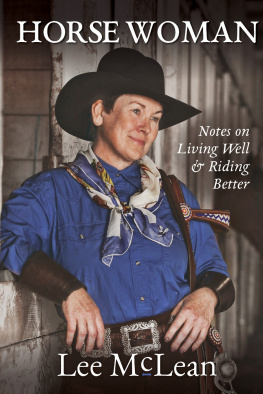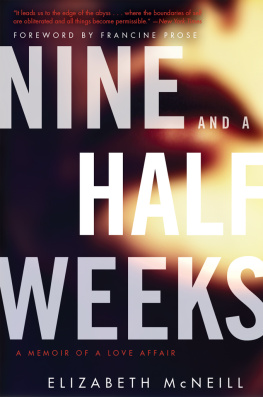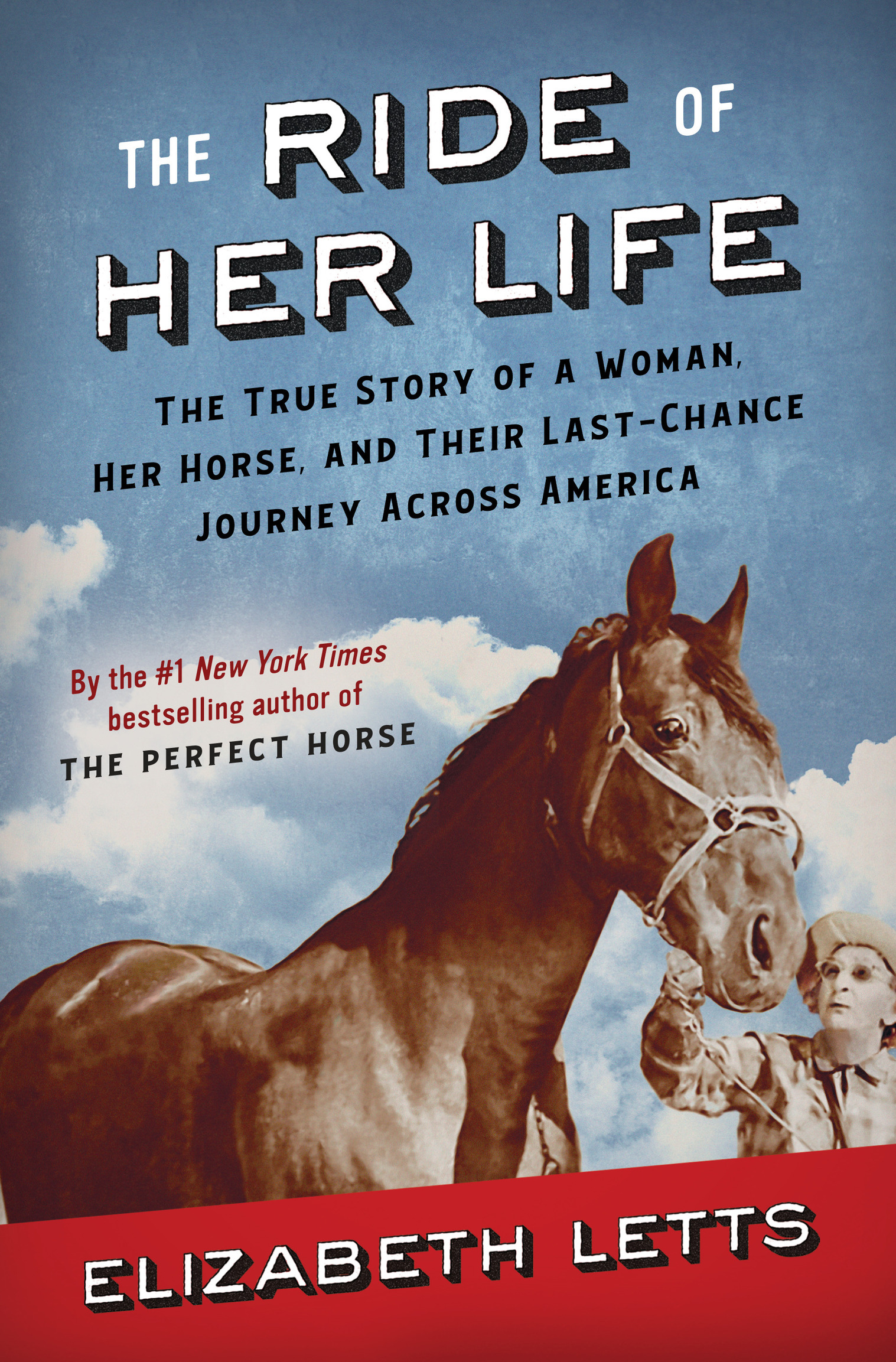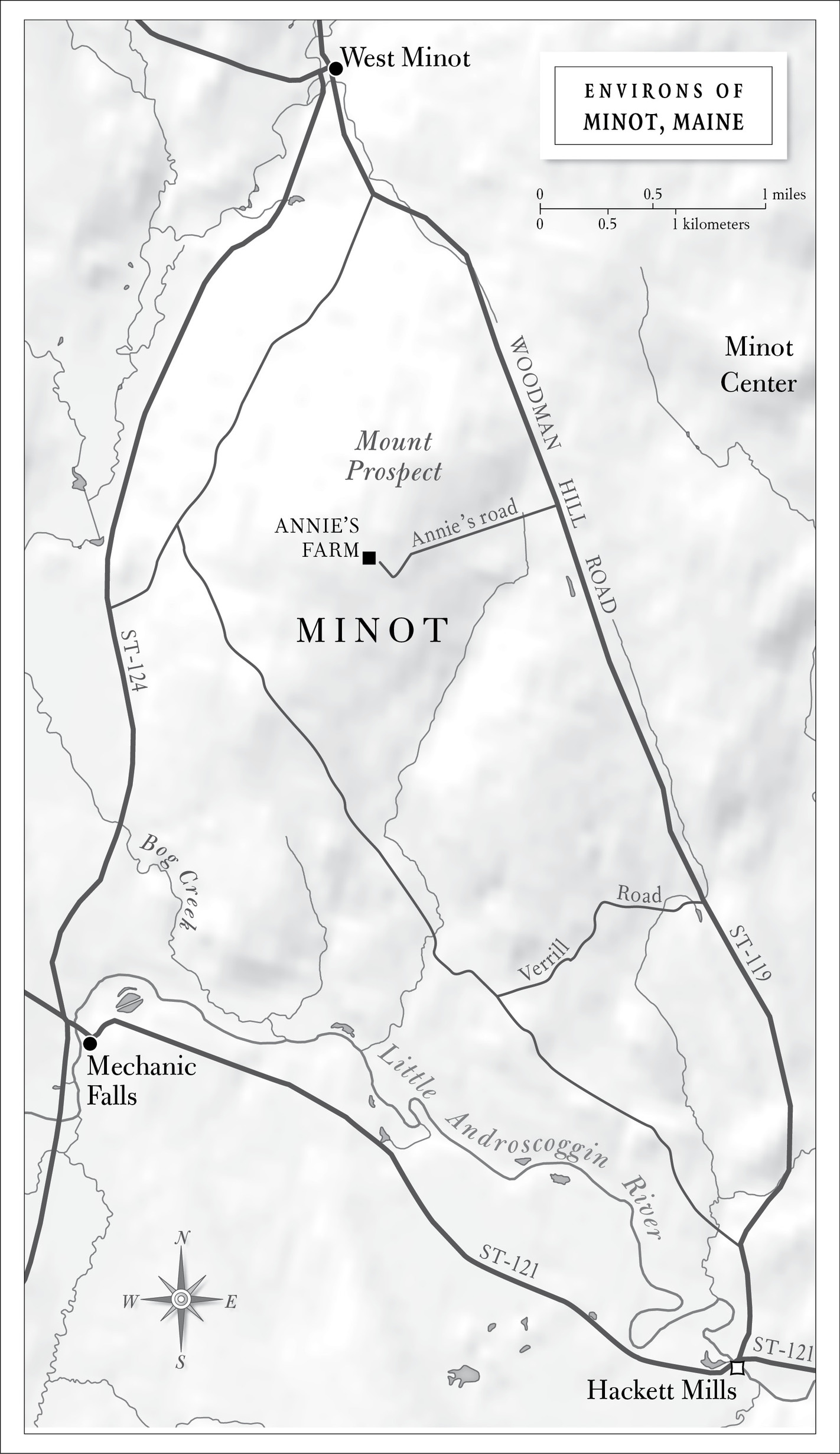Contents
Landmarks
Print Page List
Copyright 2021 by Elizabeth Letts
Maps copyright 2021 by Mapping Specialists, Ltd.
All rights reserved.
Published in the United States by Ballantine Books, an imprint of Random House, a division of Penguin Random House LLC, New York.
Ballantine and the House colophon are registered trademarks of Penguin Random House LLC.
Library of Congress Cataloging-In-Publication Data
Names: Letts, Elizabeth, author. Title: The ride of her life : the true story of a woman, her horse, and their last-chance journey across America / Elizabeth Letts. Description: New York : Ballantine Books, [2021] | Includes bibliographical references and index. Identifiers: LCCN 2020048732 (print) | LCCN 2020048733 (ebook) | ISBN 9780525619321 (hardcover) | ISBN 9780525619338 (ebook) Subjects: LCSH: Wilkins, MesannieTravel. | Horsemen and horsewomenTravelUnited StatesBiography. | Travel with horsesUnited States. | Overland journeys to the Pacific. Classification: LCC SF284.52.W55 L48 2021 (print) | LCC SF284.52.W55 (ebook) | DDC 636.10092 [B]dc23
LC record available at https://lccn.loc.gov/2020048732
LC ebook record available at https://lccn.loc.gov/2020048733
Ebook ISBN9780525619338
randomhousebooks.com
Title-spread photograph: AP Images
Book design by Barbara M. Bachman, adapted for ebook
Cover design: Joe Montgomery
Cover image: Portland Press Herald/Getty Images
ep_prh_5.7.0_c0_r2
Contents
Faith is not the clinging to a shrine but an endless pilgrimage of the heart.
Abraham Joshua Heschel
A nickname is the hardest stone that the devil can throw at a man.
William Hazlitt
Prologue
HER NICKNAME WAS JACKASS ANNIE . No matter what else they said about her, everyone agreed on this. She got her nickname when she worked as a stitcher in a shoe factory and was so poor she had to ride a donkey to work. In a 1958 history of her hometown of Minot, Maine, she was described as one of the so-called characters that provide the humor that makes towns of this type interesting. Some said she had run off as a teenager and joined the circus, become a bareback rider, only returning home when she heard that her mother was sick. Others swore shed lived in and around Minot all her life, a life that hadnt amounted to much. Shed been married once, at least, and people said shed sent the man packing when hed tried to get the title to her farm. Her given name was Annie. Around Minot, Maine, it was Jackass Annie that stuck.
In November 1954, Annie took her dog and got on a horse and started riding. Destination: California. From a modern perspective, her journey seems almost bewilderingimagine trying to navigate without the benefit of GPS, to travel with no cellphone, no credit or debit card, not even a bank account to draw from. In fact, when she first set off, Annie didnt even have the kinds of tools that were available in 1954: road maps, a flashlight and batteries, a waterproof raincoat. Annie headed south, a Quixote in the company of her Rocinante, a run-down ex-racehorse, and her Sancho Panza, a little mutt. Society has called these people by different names: vagabonds and drifters, pilgrims, hoboes, and hippies. She called herself a tramp.
Had she been a man, perhaps her independence, her eccentricities, her free spirit would have won her admirers, but the citizens of Minot, like much of small-town America in that era, valued outward conformity. In the postwar years, womens roles were tightly circumscribed and largely defined by their relation to otherswife, mother, widow. The cult of domesticity was in full swing. A single older woman didnt have much leeway if she wanted to be seen as respectable. The ideal unmarried older woman was devout, docile, and a bit dull. Annie was none of these.
Her real personalityfunny, quirky, and boldhad been buffed and sanded in memory to make her appear more conventional, more palatable to those who would judge a woman for any deviation from the straitlaced norm. Forgotten was her fondness for a good party, her two divorces, her stint as a vaudeville performer, the fact that she never set foot in a church. In its place was the respectable Widow Wilkinsfolksy, kindhearted, and maybe a bit simpleminded. When I traveled to Minot and met people who had known her, that was how her former neighbors described her. They were proud of their famous citizen. They hesitated to tell me how poor she was, how mean her circumstances, how shed never been considered part of polite society. They didnt want to say a word against her. What struck me, though, was that in spite of their pride in her grand adventure, folks still remembered her as Jackass Annie. The pejorative had stuck like a burr on a shaggy dogs coat. Annie deserved better.
So this is her true story, and in this story I call her by the name she was born withjust plain Annie.
Winter is not a seasonits an industry.
Sinclair Lewis
1954
Chapter
Living Color
THE SUN ROSE BRIGHT over Pasadena, California, on January 1, 1954. All along Colorado Boulevard, people had lined up early, five or six deep, in preparation for the sixty-fifth annual Tournament of Roses Parade. Pasadenas Rose Parade had originally sprung from the flowery imaginations of a committee of boosters who wanted to show off the beauty of California in midwinter, when most of the rest of the country was covered in snow. Now parade floats festooned with thousands of fragrant, bright-hued roses rolled past mop-top palm trees in the sparkly morning sun. But this Rose Parade was like no other. As the debut event of 1954, it was a fitting launch to a year that would mark many important transitions. This year, in addition to the palomino horses ridden by the Long Beach Mounted Police, the display of the crisp crimson-and-white uniforms of the Bellflower High School Marching Band, and the brilliant floatsGullivers Travels, Cinderella sponsored by Minute Maid Orange Juice, flamenco dancers in sequined costumes whirling on the Mexican entryeach festooned with thousands of individual fresh flowers, there was an important new addition. Two state-of-the-art NBC television cameras scanned the procession, broadcasting the first live TV colorcast to twenty-one NBC affiliates.
To show this first ever coast-to-coast color broadcast, the Radio Corporation of America had sent out a preproduction run of two hundred of their brand-new color receivers to RCA Victor distributors across the continental United States. A few of the receivers were put into strategic central locations, such as hotel lobbies in major cities, situated so as to attract the most attention for this newfangled invention. On New Years Day, a few thousand people in selected cities scattered across the countryOmaha, Nebraska, and Wilkes-Barre, Pennsylvania, St. Louis and Toledo, Baltimore and New Havenwere able to see the golden shine of the palominos, the vivid reds and yellows of the roses, the crimson and white of the drum majorettes. Southern California, Americas land of perpetual sunshine, a mild and sunny sixty-two degrees that New Years morning, would never again seem quite so far away. It was a fitting start to 1954the year the world suddenly accelerated.

